Valencia hosted Chelsea at the Mestalla for matchday five of the UEFA Champions League group stage. Both Albert Celades and Frank Lampard were hoping their team could secure qualification into the round of 16.
In an open, attacking and exciting match, the score ended 2-2. This tactical analysis will investigate how Valencia and Chelsea played out the draw via an analysis of match tactics. Specifically, the analysis will include information on offensive, defensive and transitional components of play from each team, as well as other key match events.
Line-ups
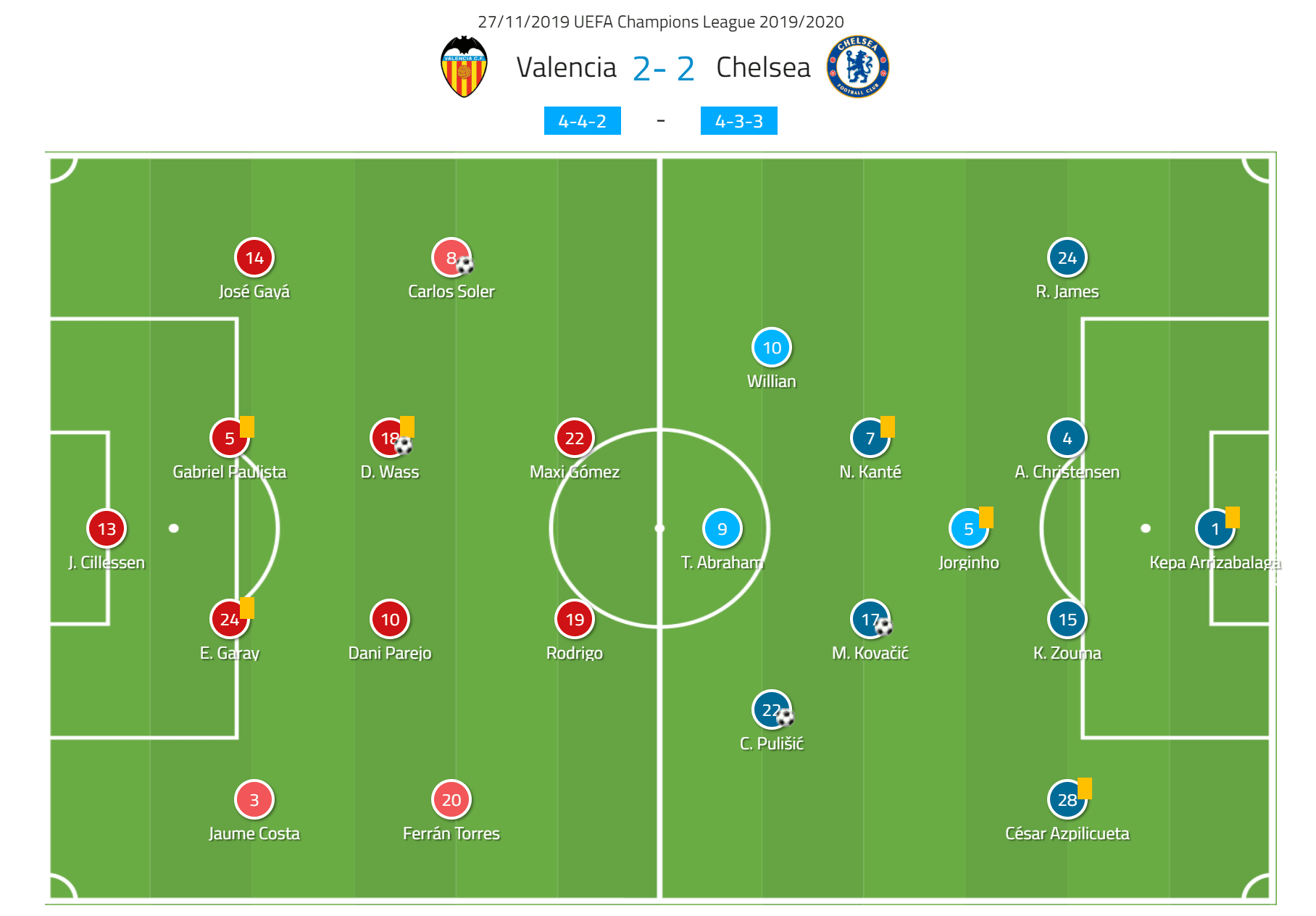
As you can see from the line-ups image, Valencia set up in a balanced 4-4-2 formation whereas Chelsea adopted for a 4-3-3. Chelsea opted for three natural central midfield players, rather than playing a more attacking option in the form of Mason Mount within the midfield triangle.
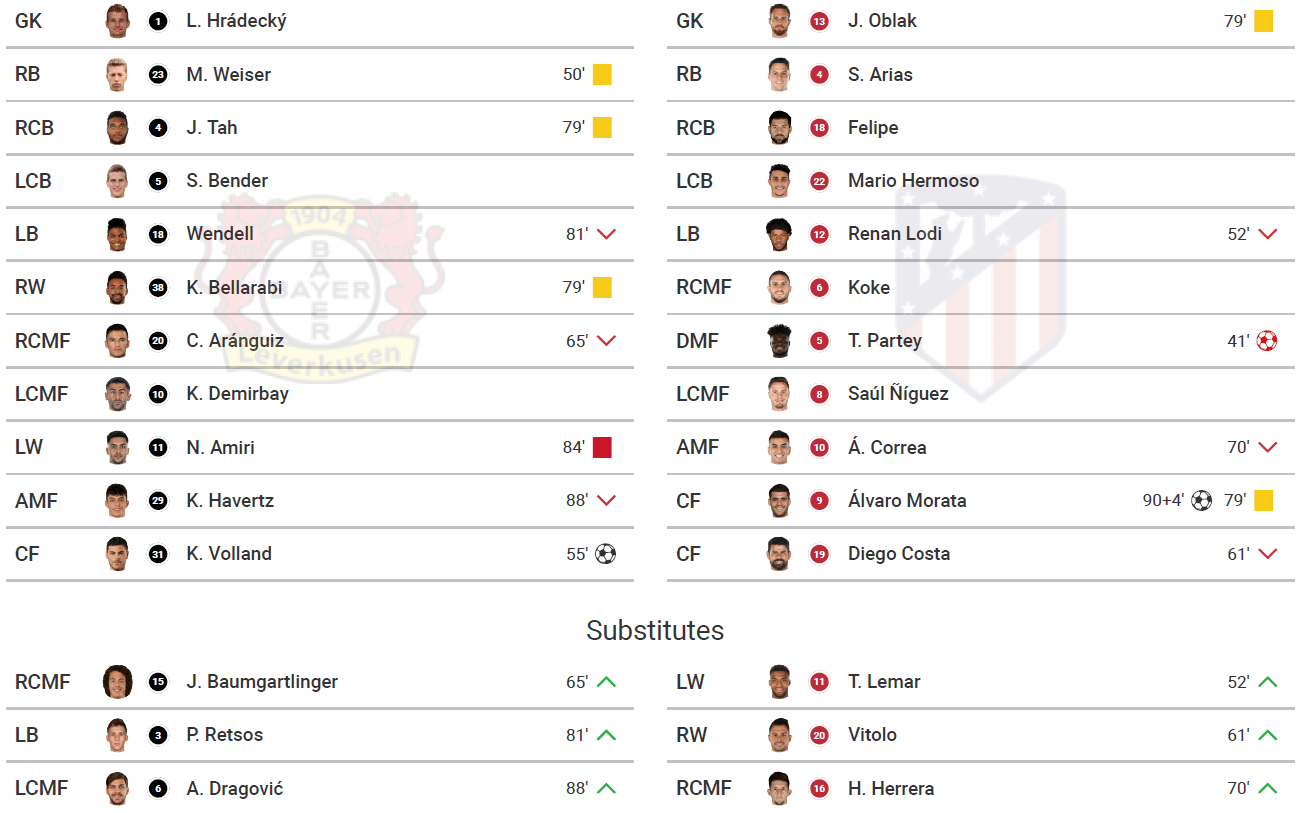
Michy Batshuayi was brought on at half time to replace the injured Tammy Abraham, otherwise, the substitutions from both teams were natural and due to the need for fresher legs or tactical tweaks later on in the match.
Average positions and formation changes
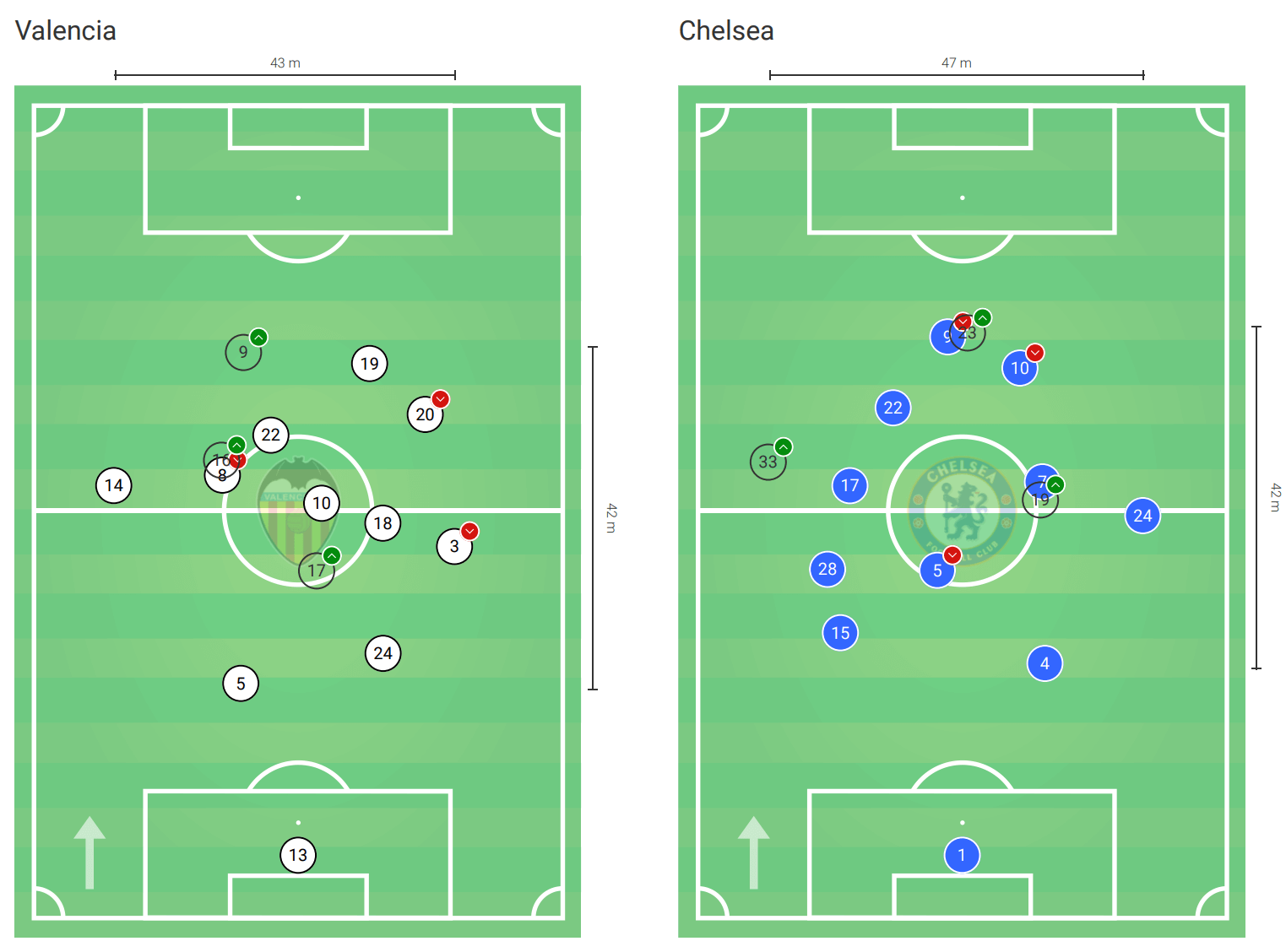
Both teams utilised their full-backs in order to obtain width, with wide players moving inside to support central midfielders and forwards for both teams. The full-backs were an important aspect of this match which will be discussed when investigating both teams in and out of possession later in the piece.
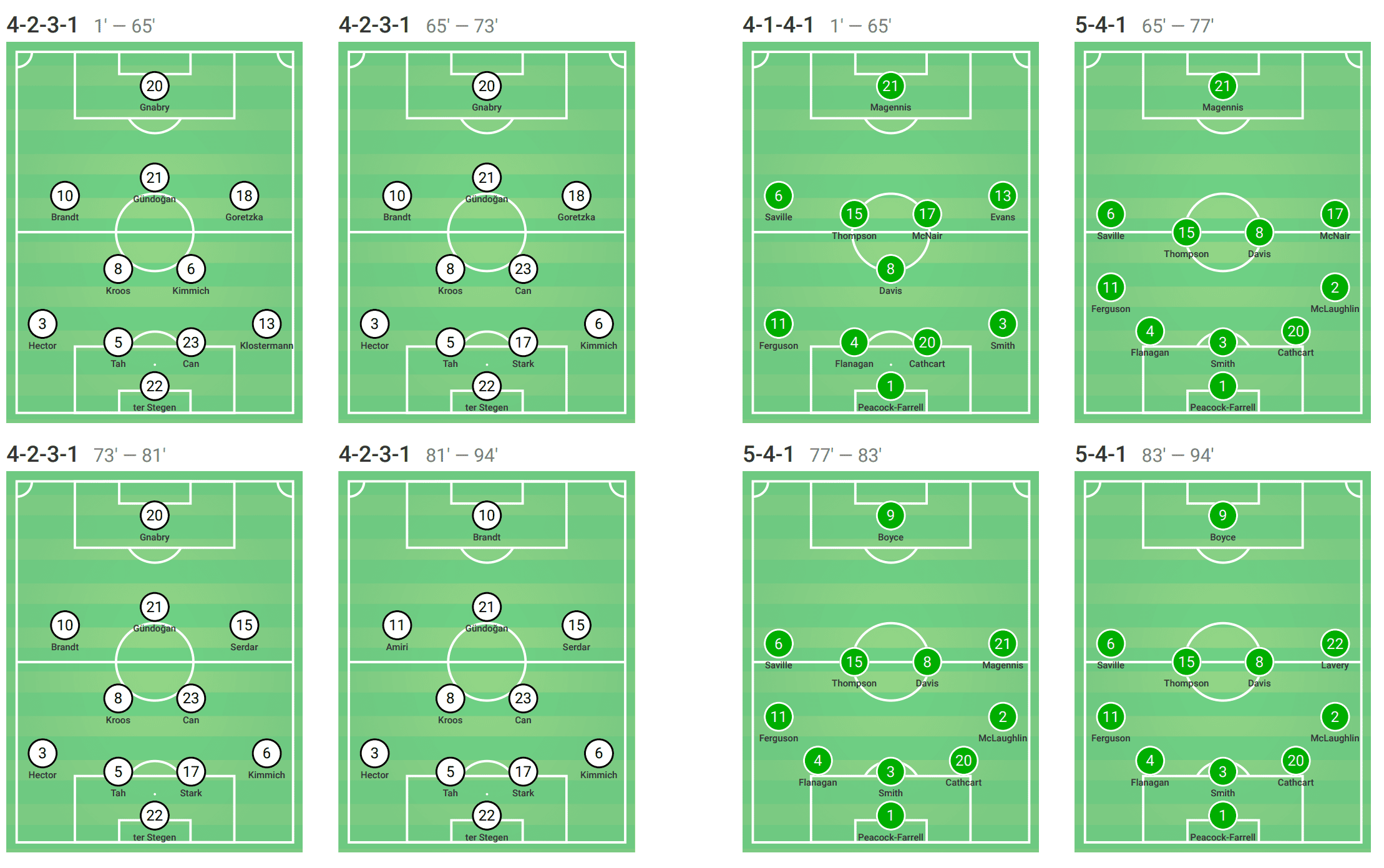
As stated, via substitutions, both teams made tactical tweaks. When Batshuayi came on for Chelsea at half time, their system did not change. However, when Emerson was introduced, Chelsea moved into a back five with three centre backs and two wing-backs. The idea behind this was to secure their lead via defensive numbers, however, they were unable to hold onto the lead as Valencia equalised whilst Chelsea utilised their back five.
For Valencia, their tactical tweaks consisted of a change from a 4-4-2 formation for the majority of the match, into a 4-3-3 when Francis Coquelin was brought on. Daniel Wass, scorer of the equalising goal, moved to right-back when forward Kevin Gameiro was introduced.
Match summary
If we analyse the goal times, it appears that the tactical tweaks for both teams within the final section of the match had an influence on the result. Valencia adopted a 4-3-3 and scored, while Chelsea went for a 5-4-1 and conceded. However, the analysis of the game cannot solely attribute such changes to the result of the match.
Firstly, this was a very open match throughout, which will be clarified in the stats section next. Both teams attacked well and defended relatively poorly, with both teams creating big chances to score. At times, the match was played with a very high, intense tempo, with both teams playing a match of transitions for multiple match periods.
Valencia took the lead after numerous chances before Matteo Kovačić scored his first goal for Chelsea soon after. The chances flowed at both ends and after a VAR check, Pulisic poked Chelsea’s second goal into the net. Valencia were awarded a penalty at the contention of many but were unable to convert. Valencia did finally equalise in bizarre fashion as Wass, who was moved to right-back, scored from an overhit cross after finding space on the outside of Emerson.
The description above hopefully applies some insight into the nature of the match. Both teams attacked and had numerous openings. From which chances were missed, scored and the excitement was added to via VAR, a debated penalty decision and a freak goal.
Match stats
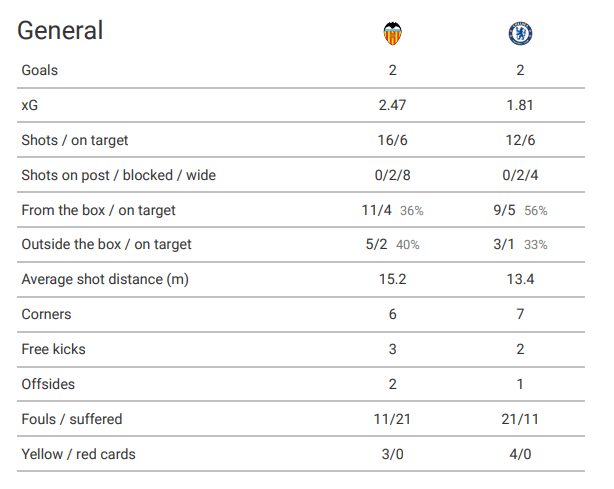
From the general stats, we can see that a draw was close to a fair reflection of the match due to chances in the form of xG, and the other frequency-based metrics.
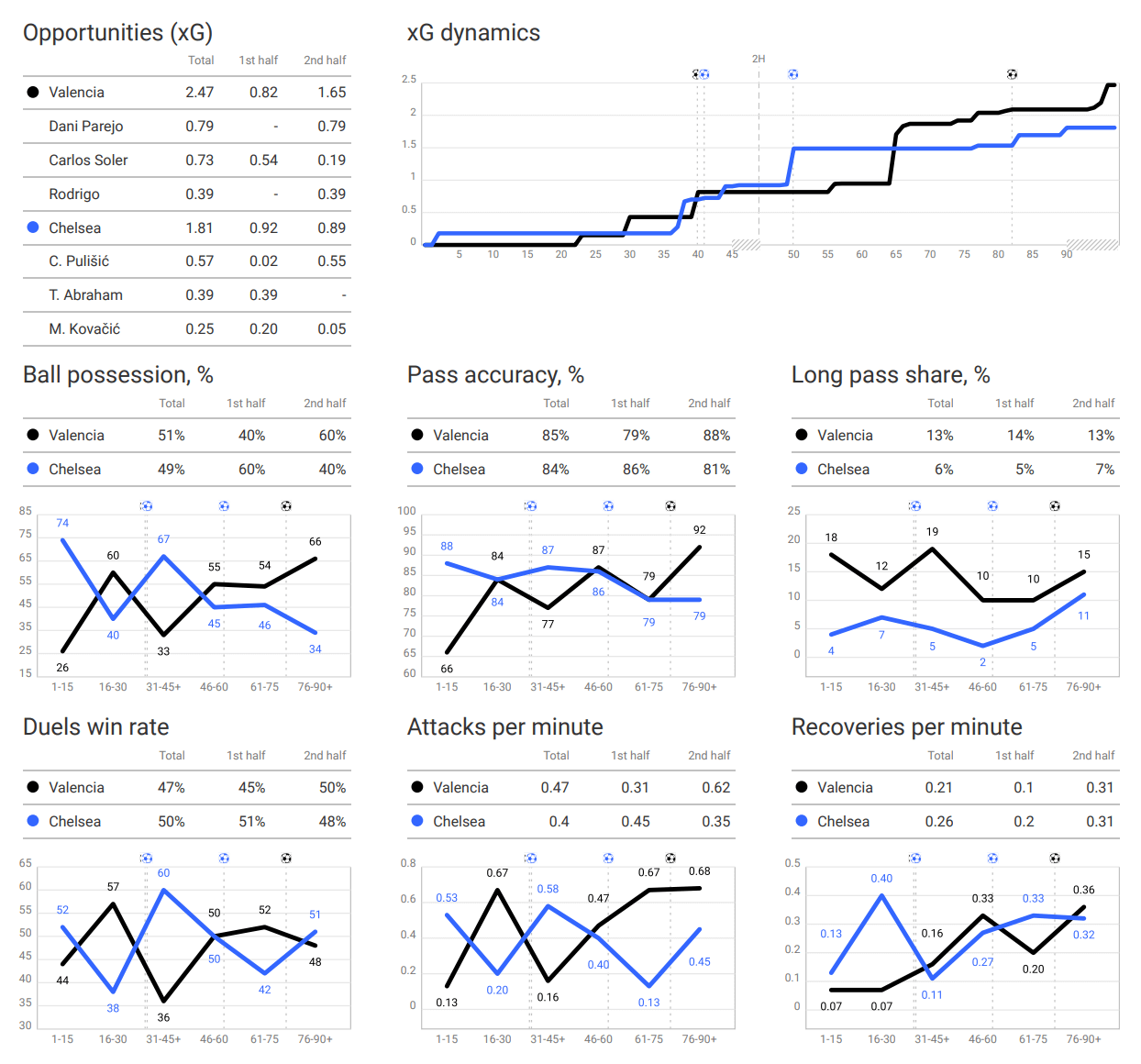
Again, with the more detailed stats and metrics, both teams operated with attacking intent and outperformed each other in different match segments. The main tactical messages from the stats are that Valencia used a slightly more direct approach, most likely to their 4-4-2 system with two strikers to hit, compared to Chelsea’s more midfield based 4-3-3. Both teams took their turn to offer a more attacking approach via attacks per minute, with Valencia upping their offensive style as Chelsea tried to sit on their lead late on.
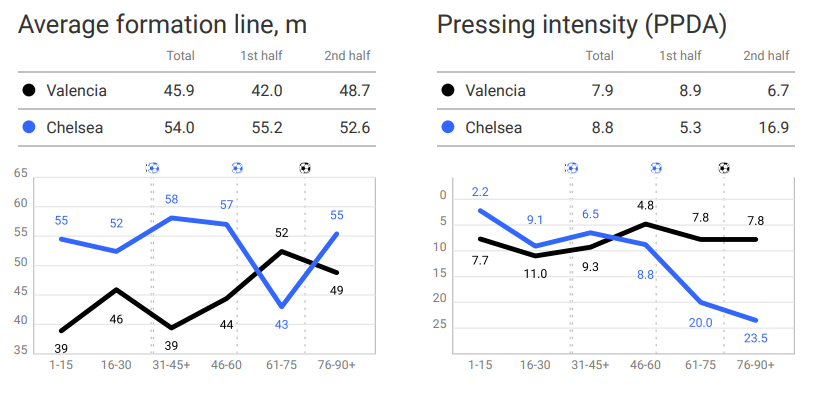
Chelsea adopted a higher line which may have encouraged Valencia’s more direct play at times. Both teams pressed with intensity for most of the match, hence the number of turnovers and the transitional game highlighted previously. However, Chelsea dropped off in order to retain shape once they switched to a back five. A concept that will be identified when looking at defensive transitions and out of possession shape for the club.
Valencia adapt to Chelsea’s press
Within possession, Valencia passed the ball to various options within their 4-4-2 with balanced pitch coverage when trying to beat or nullify Chelsea’s press. Frequently, the players needed to go back in order for players to move and create space for the next pass. This was exaggerated due to their 4-4-2 and only two central midfield players. Many teams now play with three central midfielders and can utilise triangles to play sideways or forwards to teammates. In their 4-4-2, Valencia operated in triangles, but wider set triangles, for example, between the central midfielder, full back and centre back.
Once a Valencia player had time on the ball, or even when under too much pressure to play through the thirds, they looked to hit direct balls into one of their two forwards. The forwards rarely won aerial duels against Chelsea’s defenders cleanly, but, they caused a nuisance and often caused an inaccurate defensive header from Chelsea. Valencia were then alive to the second ball, with wingers, high full-backs and midfielders then running into spaces between the slightly deformed Chelsea backline, ahead of the retreating Chelsea midfield for whom the ball had travelled over in the first place. Given Chelsea played a 4-3-3, Valencia were able to have their wingers 1v1 against Chelsea full-backs or at times overload with wingers and offensive full-backs making runs for central midfielders to find.
Such methods created numerous chances and lead to the first goal for Valencia. When Chelsea dropped off or when options were available, Valencia did play through the lines progressively. But, due to the transitional nature of the game, opportunities to break lines were frequently on before possession built up.
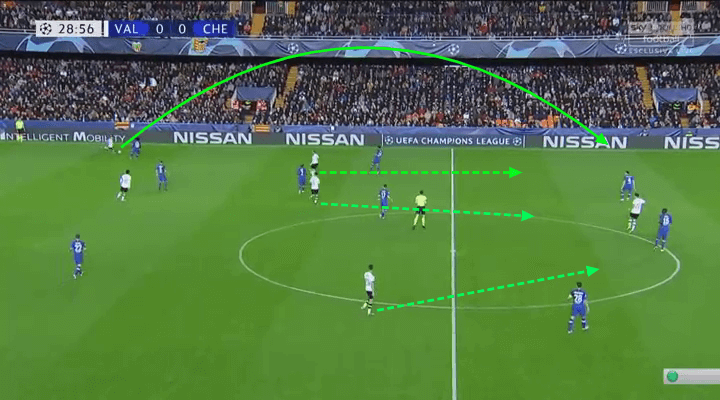
Chelsea struggle without the ball
For most of the match, Chelsea’s defensive transition consisted of a high, intense press with Chelsea’s front three and midfield three and also advanced full-backs pressing Valencia’s players. This encouraged more direct balls from Valencia. I describe Valencia’s play as more direct at times as their system was far from a long ball, but they did exploit longer passes into players or space when applicable. Chelsea’s press was easy to play through at times, with players too keen to push up, leaving spaces for opposition players.
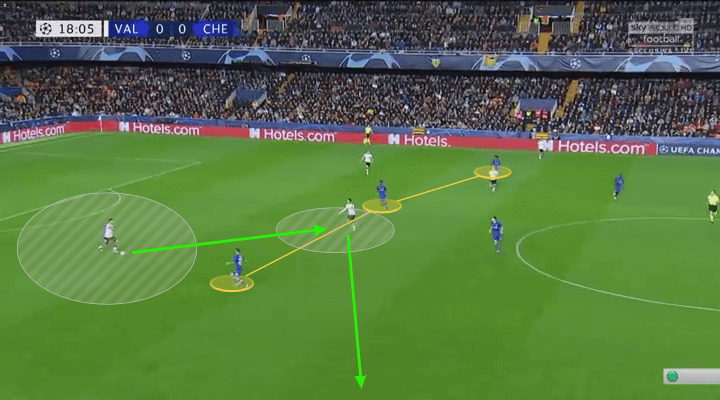
Given the fast nature of the game, for the majority of the match, Chelsea rarely settled into an out of possession shape, allowing Valencia to build up possession while blocking spaces and maintaining defensive security.
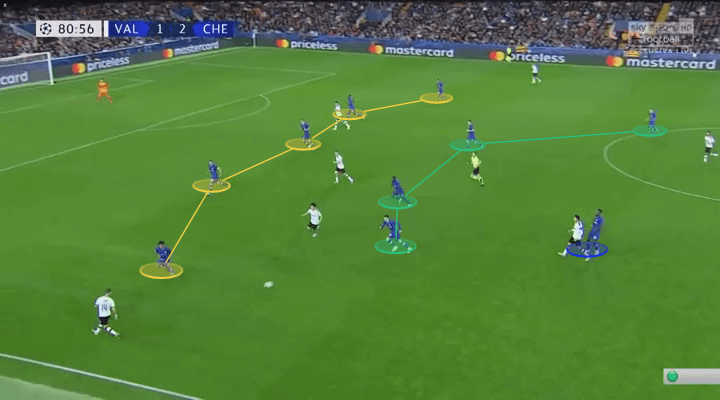
When Chelsea were leading and switched to a 5-4-1, Chelsea did drop into shape quickly to re-group, rather than counter-pressing, this is reflected in their drop off in PDDA statistics. Whilst a defensive move in practice, Valencia created chances at a similar, if not enhanced rate of success. In theory, Chelsea would be more secure in wide areas due to a wider defensive line via an extra player, and wide players in a more defensive position, rather than being pushed up in a 4-3-3. However, Valencia’s successful playmaking in central areas caused Chelsea’s backline to play narrow, creating space for wingers and full-backs in wide areas for Valencia.
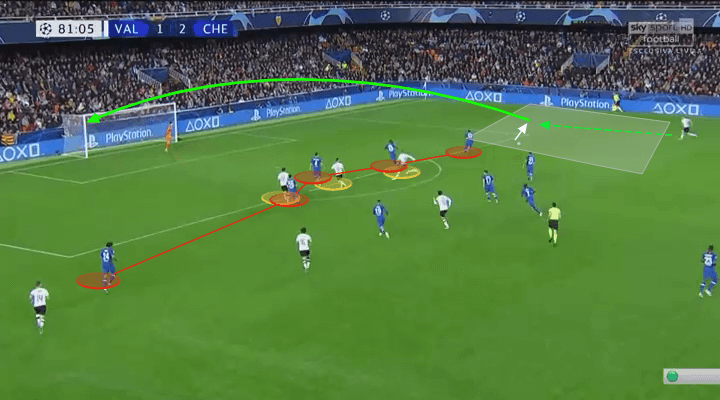
As stated, this was mainly a match of transitions. When Chelsea did win the ball via their press or other forms of turnover, they looked to progress via quick passing sequences. Chelsea’s wingers stayed narrow to support the striker and offer passing lanes in between Valencia’s midfield players. From there, Pulisic or Willian got on the ball and ran at the Valencia defence, with the striker and fellow winger making diversion runs or runs into space. As play developed, the full-backs, mainly the more attacking Reece James joined the play on the flanks. This formed the shape for Chelsea’s structure in possession.
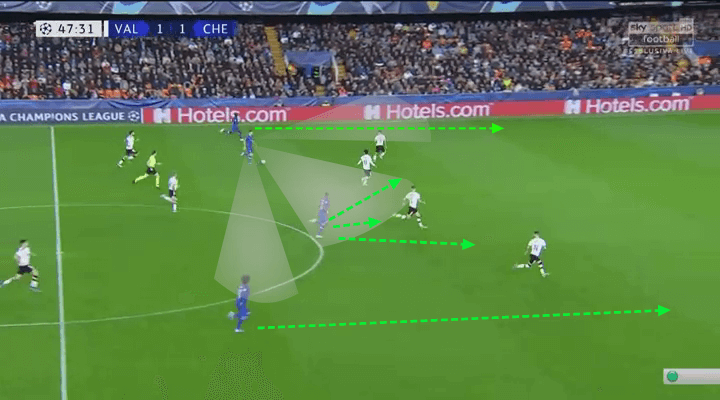
Chelsea create numerous chances
When Chelsea attacked in possession, they tried to do so quickly within transition to take advantage of misplaced Valencia players. However, when the move didn’t materialise, Chelsea attempted to maintain possession and move the ball around the pitch to try and create spaces to play and break Valencia down. To do so, Chelsea pushed their full-backs high, more so James on the right-hand side and essentially played with a 2-3-5 formation with the wingers tucked slightly inside and roaming while the striker stayed central. Although, the central midfielders for Chelsea did try to go beyond the offensive line to cause Valencia problems so the structure was flexible. If it was only James who went forward, should Cesar Azpilicueta stay deeper to cover, the shape looked like an asymmetric 2-4-4. Chelsea would pass and move and play across the pitch in a U shape to utilise all playing space and widen the Valencia line or whip crosses into the box.
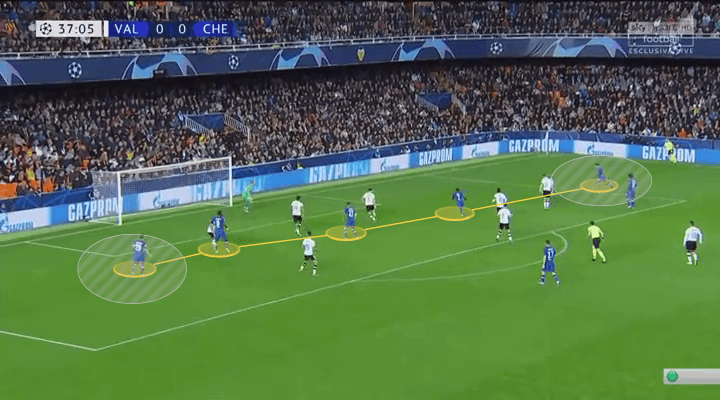
Valencia’s varied transitions
When Valencia lost the ball, they too, like Chelsea, pressed to win the ball back as quickly as possible in high positions. The similar tactics from both teams resulted in the open, flowing, attacking game which occurred. Given Valencia’s players were high up the pitch, it made sense to counter-press initially before dropping into their shape out of possession when possible.
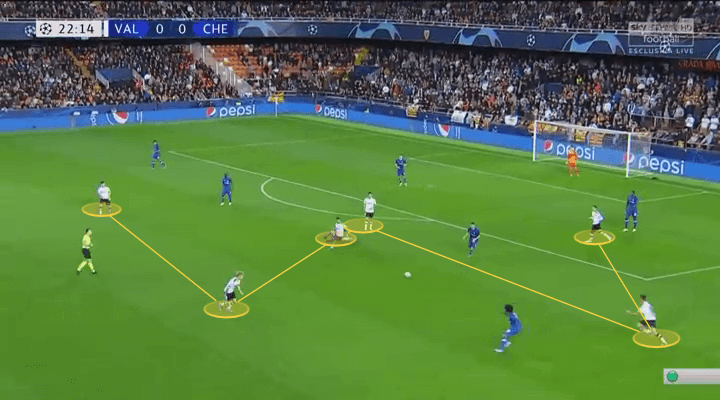
Out of possession, Valencia dropped into their 4-4-2 shape with two banks of four, a traditional block. Occasionally, one of the forwards dropped into the midfield to avoid numerical inferiority, creating a 4-5-1 or 4-4-1-1.
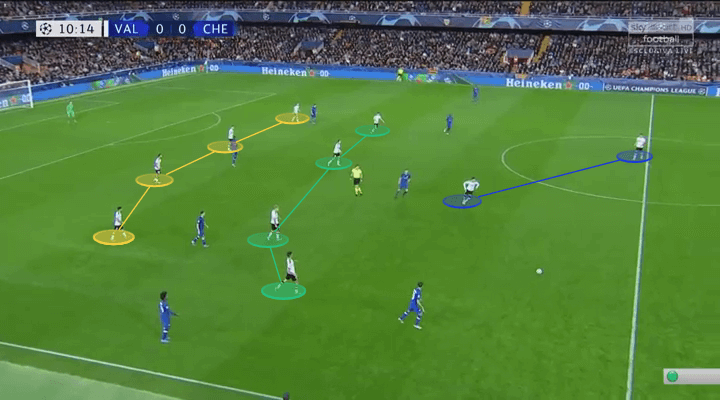
Due to the shape of Valencia out of possession, should they need to drop into shape after all of the quick transitions, the team could move into their attacking transition easily. They still had a balance of players all over the pitch due to their 4-4-2, and if they opted to play a 4-5-1 they had an attacking outlet in the form of a striker who could attempt to spin into space or channels, or, attempt to hold the ball up for advancing midfielders, as stated earlier.
Conclusion
Overall, this was an exciting Champions League clash in group H. Both teams were aiming to win in order to secure qualification and therefore threw caution to the wind in order to attain such goal. Somewhat ironically, given the need for a win for either team, a 2-2 draw was the end result. A draw leaves both teams fate in the balance going into the final group match. Valencia travel to group leaders Ajax, knowing they must win the match or at least better Chelsea’s result against fourth-placed Lille. For Chelsea, win and they’re through.

If you love tactical analysis, then you’ll love the digital magazines from totalfootballanalysis.com – a guaranteed 100+ pages of pure tactical analysis covering topics from the Premier League, Serie A, La Liga, Bundesliga and many, many more. Buy your copy of the November issue for just ₤4.99 here






Comments